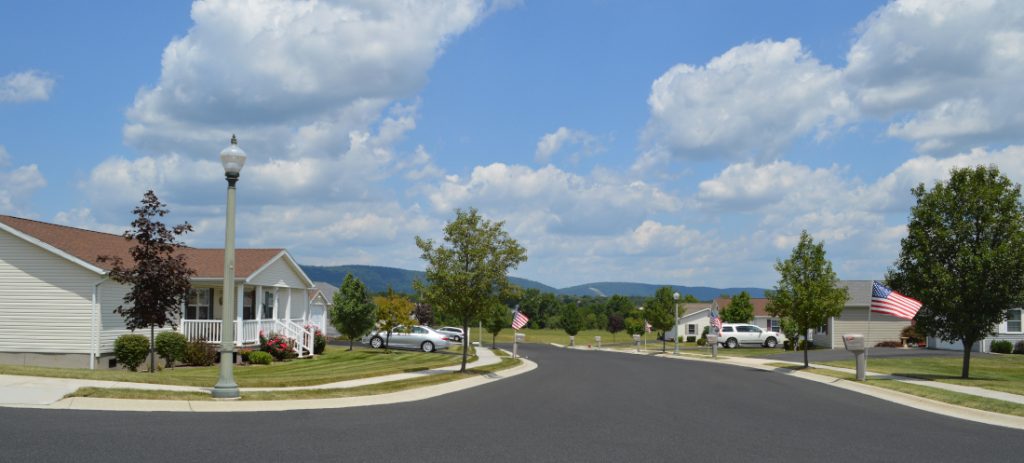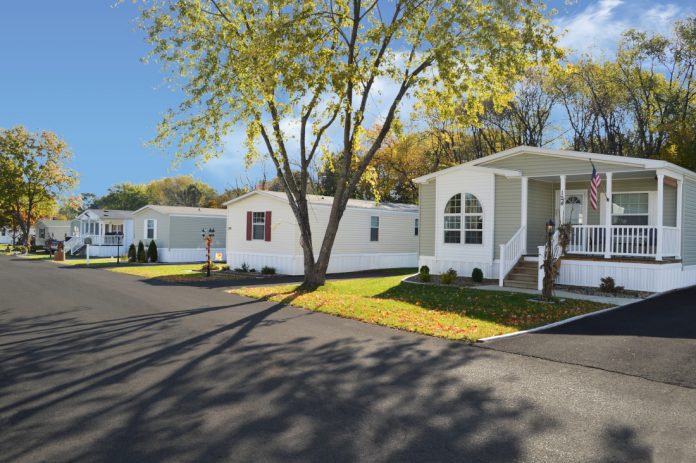
By most estimates, there are approximately 40,000 professionally run manufactured home communities in the country. And even though most homes in a community are owned by the resident, few organizations buy more homes than large operators of communities.
So, why and how do communities buy homes?
Homebuyers for communities stay active for many reasons. New communities need homes, as well as communities that are expanding. Community buyers purchase homes that will be marketed as rentals, and model homes that will be used to demonstrate how well built and thoughtfully designed modern manufactured homes can be.
Homebuying Insight from a Purchasing Professional
Ayal Dreifuss is the vice president of rentals for UMH Properties, which owns and operates communities in eight states on the eastern seaboard and in Tennessee.
Simply stated, Dreifuss said buying homes in volume can be tricky.
“I order hundreds of homes every year for our manufactured home communities,” he said. “Since the demand for rental homes is very strong in all our communities, we’re trying to stay ahead of the game everywhere, by trying to estimate the amount of brand new vacant inventory we’re going to need in each community.”
Dreifuss said he buys new homes with the expectation of having them occupied in three months or less.
“Estimating the number of homes is the tricky part, where sometimes we fall short for unexpected high demand or vice versa,” he said.

Getting the Needed Pricepoint
The final price of a home will vary from location to location and region to region. This has a lot to do with the cost of freight and distances that are traveled for and with the home. Price also is impacted by local code and regulation, both where the homes are being built and where it’s being placed.
“While homes in Tennessee wouldn’t have to stand for more than 30 pounds of roof load, homes in New York would have to stand for more than 40 pounds of roof load, and require a higher grade of insulation,” Dreifuss explained.
UMH Properties also pays more for freight going to New York, because they’re buying from a home building facility in Pennsylvania. The company works with select builders in volume and the Pennsylvania provider is the nearest in their network to New York.
“We usually prefer to purchase our homes from the closest location not only to save on freight but also for service purposes,” he said. “In any case, the purchase price always has to be competitive, if the prices of the local home manufacturer are too expensive, we would consider getting homes from manufacturers located farther away and even from different states for a lower price.
“We believe that our homes are strong enough to take a trip of any distance, whether it’s 50 or 400 miles,” Dreifuss said.
What it Means to Purchase in Volume
UMH Properties has purchased nearly 4,900 homes since the start of its designated rental program in 2012. The homes they purchase, Dreifuss said, are forecasted to serve residents well for at least 40 years and more.
“For that reason above all, we’re not compromising on quality,” Dreifuss said. “We have our special UMH standards that all our home builders are keeping. That includes items such as steel doors, porcelain sinks and tubs, and real wooden cabinets.
“Although these options make our homes more expensive, they are all well worth it for the long run,” he said.
Dreifuss said the focus that UMH and its builders put on structural integrity and quality material choice is off-set when possible by avoiding the urge to install premium upgrades such as spa tubs or granite counters.
“These luxury upgrades we will include many times in our show home inventory… homes that we have for sale, not for rent. The new rental homes have to be well built with the most durable components, that would be able to stand any normal use of our renters, but still be affordable enough,” he said.
What is Customer Response?
UMH Properties has focused in recent years on its rental business. In fact, it’s the first large operator to program and build an all-rental community, with its property Memphis Blues in Tennessee.
Attention the company’s rental homes have received has resulted in a waiting list at nearly every property.
“Our customers are very excited to move into our brand new homes,” Dreifuss said. “The most common rental home we order is a 3-bedrooms, 2-bath 16- by 76-foot single section home. This one is a winner because most people find that a 1,200 square-foot house is a great fit for a family with two or three children.”
The end cost for UMH Properties is about $45,000 for that home, which is achievable only because of the volume or purchasing. However, that price point allows the company to charge a new resident, in a new home, only $750 per month.
“This is a very affordable price in most areas,” Dreifuss said. “And we can still get the return on our investment within five years.
Another reason the rental program has been successful is that UMH Properties, with the help of the Manufactured Housing Institute, was able to make progress in Washington, D.C., in getting rental home financing for new manufactured homes in a park on a similar footing as the multi-family rental industry.
Homes of Varying Size
A good number of UMH residents desire to live in larger, multi-section homes. Those homes, while in lesser numbers, can be rented at a UMH property for between $850 and $950 per month, depending on the location and size of the home.
“In some area we have only small sites available, but we can fit a 1- or 2-bedroom tiny home. Although most of our costumers prefer living in bigger homes, we still have a very strong market for single men or women, young or older, who want to live by themselves and don’t want to pay more than they have to for their homes,” Dreifuss said.
UMH Properties’ rental programs provide millions in revenue each year. And, the massive volume of brand new homes brought into communities every year is having a stunning impact on the overall curb appeal of the communities, Dreifuss said.
“It actually has transformed our communities, and our new acquisitions, into exceedingly beautiful and very desirable communities that our residents are very proud to live in at very affordable prices,” Dreifuss said.










